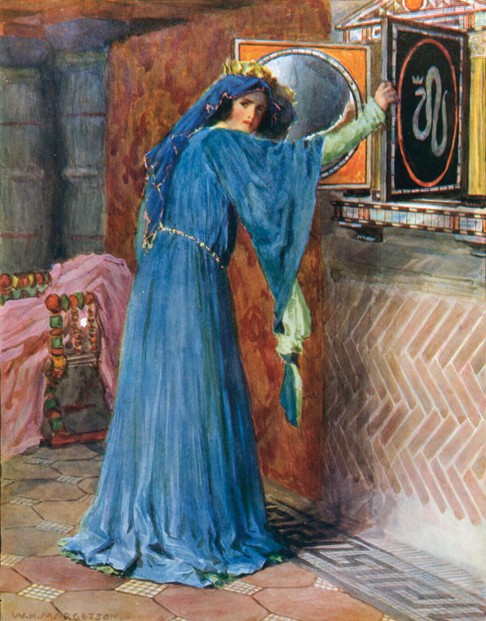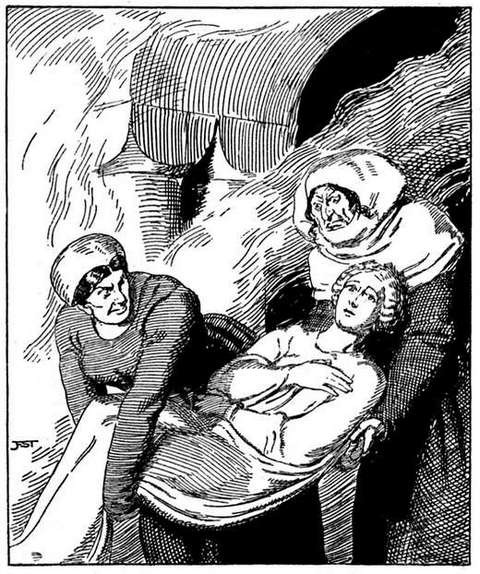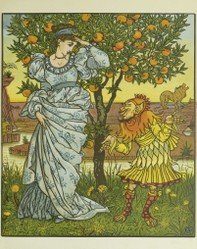The witches have sparked human imagination for thousands of years. There are many reasons for that. All of them culminate in power. Or, shall we say, superpowers? Witches can make magical potions to not only poison others but to make some people in love into others, too. Witches can also turn people into animals or objects, or they can have the ability to shapeshift. Some witches can fly, predict the future, and do other cool things. They can do stuff most of us dream about! Many are actually jealous of witches, which were not always considered bad people. Just different, with special sets of skills.
The witches are such interesting subjects there already exist tons of books about them, and we could easily write a few just about the books dedicated to witches. Instead, we'll focus on the basics - the witches who made the greatest impact on our culture through storytelling. Here are the top 10 (kind of) witches from literature!














 Vintage Postcard Artists with 10 Examples of Easter Cardson 02/21/2025
Vintage Postcard Artists with 10 Examples of Easter Cardson 02/21/2025
 Valentine's Symbolson 01/23/2025
Valentine's Symbolson 01/23/2025
 Thanksgiving Symbolson 11/12/2024
Thanksgiving Symbolson 11/12/2024
 Symbols of Halloween - Use Them at Their Beston 09/18/2024
Symbols of Halloween - Use Them at Their Beston 09/18/2024


Did you learn something interesting about the famous witches of the world?
From the top of my head - no. If the witch is an opponent, the goal of the hero(ine) is probably to destroy her. Dying by accident would be a disappointment from the dramatical view. Frank Baum could afford killing his witch because he used her death as a trigger for the journey, where the story actually starts. And he still kept three witches and a wizzard alive.
Thank you for your comments below, in answer to my previous observations and questions.
Your answer in the comment box immediately below describes falling houses as witchly deaths that "probably qualify under the section with accidents."
Is there any other fairy tale that invokes accidental witchly deaths?
Traditionally, fire and iron are the best cures against the witchcraft. I guess water is added due its association to cleaning. Falling houses probably qualify under the section with accidents. She dies before we even know about her existance, nevertheless about her wickedness, so this is not a classic punishment.
I am not familiar with others, sorry. I am sure they are, though, but in most of the area the roles for fantasy creatures with good and bad presents are mostly divided.
Sure they have, but they are not so popular. The most well-known is Merlin, of course, and there is a warlock in The Three Sisters, once popular, but later almost forgotten fairy tale by Johann Musasus. The role of bad guys in fairy tales is mostly reserved for giants and occasionally dwarfs.
Three witches of the 10 above die even as seven face no death experience in their fairy tale.
The wicked witch of the West, Snow White's stepmother and Little brother's and little sister's stepmother respectively die by water, fire and heated iron.
(Might we also say that the wicked witch of the East in the Oz books dies by a Kansas house dropping atop her during a high-wind event?)
What other means besides fire, hot iron, water -- and house-falls ;-D -- might kill a fairy-tale witch?
Your including La befana among the famous literary-history witches intrigues me.
Italian tradition believes that the Magi had La befana as their hostess the one night that they itinerated through her village en route to the Bethlehem stable. The Magi invited her to join them even as she liked her life in her lovely home amid lovely and loving villagers.
But then she made up her mind not to miss meeting such a special family. She nevertheless missed the Magi at each mile marker along their route.
So she punished misbehaving children even as she punished herself for her procrastination.
Some Italian regions see La befana as more punitive than others.
Would there be any other such witch, full of delightful presents for some, full of disappointing presents for others?
Thank you for your comment below, in answer to my previous observation and question.
Some Unitedstatesians call men male witches even as the word warlock can be considered the "job title" -- ;-D -- of those men who display witchly powers.
Do fairy tales ever have male witches?
It depends on how you define the term. Good witches in fairy tales are mostly called fairies. We can find one in Ceinderella, for instance. And we can find a bad fairy in The Sleeping Beauty, of course. A fairy and a witch is essentially the same. The word witch basically means wise woman, not bad woman, as some people believe. And being wise means having powers which can be use for good or bad purposes.
L. Frank Baum's Oz land began with four witches, of whom those easterly and westerly brought bad. He considered his southern witch -- whom the film version called northern -- goodest of the good, as communicated by her name Glinda the Good.
Do fairy tales ever have an all-good witch such as the Baum Glinda?